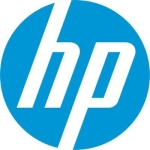What is our primary use case?
Initially, I was running a different endpoint security program but it did not have a dashboard that met my needs. It would only do on-premises. If laptops, desktops, or VDIs were remote, such as people working from home or in a different office, my VDIs—which are really just on-premises but they're in a separate subnet in VMware, Windows 10, Windows 7, Windows 11, 2008, all the way up to 2022—I could only get the servers that were on-prem. That solution had a management console but there was no integrated console within Microsoft so that I could cover all bases. I deployed Defender for Endpoint and now I'm able to see them in there. For some, I've still got the old AMP on them, but Defender will run in passive mode and let AMP run and report to its own console.
The reason I don't want to run AMP, primarily, is that it's a resource hog. Defender for Endpoint integrates it and automatically comes with the Windows operating system or Windows Server Desktop. Plus I can use Defender for IoT and see, on my network—which is a home lab company—my routers, my switches, and, believe it or not, my televisions and refrigerators; the IoT devices that I might have on my network. And that integrates into Defender for Endpoint.
And with Sentinel, I'm hoping to pull that into logs that I have for my cloud-based and on-premises-based servers so I have one pane of glass that will alert me if something is going on. It will correlate those logs from Defender on every endpoint and put them into one incident if there are alerts to be had.
How has it helped my organization?
It probably could help me prepare for potential threats before they hit. The nice thing about it is that it has filtering. I can filter on different logs and say, "I'm looking for this user and every place he ever logged into. I can filter on his name and the scope of the machines I'm looking at. If there's a bad actor, a different version of software, I can pull that up. It has simple filtering and advanced filters, which really help out a lot. It does speed things up.
I rely a lot on Defender for Endpoint to find a lot of stuff for me. With Microsoft knowing about a threat in the wild, something that hasn't hit me yet but it's out there and I'm vulnerable to it, it will detect those vulnerable systems for me. I rely on that to patch or update that operating system.
When you install an OS, it could be a year old, it could be brand-new, or it could be five years old and it's not patched and updated. Sometimes there are apps on it, from Google or Adobe for example. This will tell me that my Adobe Acrobat has so many vulnerabilities and that I need to bring it up to this date because I've got 13 vulnerabilities that could be hacked. I rely on it quite a bit to pull those notices together and alert me on what needs to be updated. I don't have to actually hunt for a lot of it. It does the hunting for me automatically.
What is most valuable?
The features I found to be most valuable in Defender for Endpoint are its alerting, policies, and threat-hunting.
For threat-hunting, I'll put some threats in a test scenario. I've downloaded known viruses that are out in the public for testing. They're not really a virus but they've got a signature. Defender for Endpoint will automatically find those, quarantine them for me, and alert me to what it did. It gives me "automated eyes."
A lot of it is hands-off. It just deploys and it updates by itself. With other applications, like McAfee or AMP, I'll have to download a new version and make sure that the signatures were applied. With Defender, one of the things I like is that it has automatic updates.
And Defender has other integrations with Microsoft that are of benefit. It will tell me that certificates are out of date for my certificate server; I've deployed certificates to my laptops or VDIs or servers or switches. There's an automation routine that I can kick in using KQL—Kustom Query Language—so that it automatically remediates the issues that it finds.
And the visibility into threats that Defender for Endpoint provides is fantastic. Since it is a Microsoft product, and they have it deployed worldwide, they pull over a couple of trillion data points a day from other companies and countries. They've got teams of security analysts or researchers who are constantly updating these and they feed me that information. I'll know about a threat that might be down the road or I might be susceptible to, something that I could patch. It tells me if there is a known fix or if there isn't, in which case I might have to go in a different direction. It's the might behind Microsoft. It pulls in all that information so everybody else can see it.
In addition, with the data connectors for Azure or containers or even M365, threats are automatically classified as high, medium, low, or informational. If they're not classified, I can classify them myself or set a priority on them as to whether they need to be looked at right away, whether they're active or in process or resolved.
Microsoft security products provide a little more comprehensive protection than some of the other offerings. One great thing about it is that it's part of the operating system and it's already turned on when you deploy the OS.
But if you do have a third party, like AMP or McAfee for example, Defender will run in passive mode. That means it's not constantly doing a scan, virus check, or malware check. Still, if you open an email, write a document, or load a USB key to copy files, it would scan in all those situations. But in passive mode, it scans once a day, I believe. It does a device discovery and it will tell you, "We found this software, we found these documents, you did have malware or a virus and it has been quarantined." And that's in passive mode.
If you put it in active mode, without the third-party virus and malware checkers, Defender for Endpoint will give you a software inventory and a timeline of every key that was clicked in case you had a bad actor that infiltrated your network or your machine. If an employee went to a rogue support site and downloaded some software, and let somebody in, it would alert me through UEBA: "There is unique behavior that we don't normally see from this person. They don't normally access this site. The alert would tell me which site had been accessed and that software had been downloaded. It would tell me the time it was installed and what it did—every keystroke. That's with Defender for Endpoint being active.
What needs improvement?
In active mode, it's great that it gives you so much information, but it does record every keystroke so you have a lot of logs. For my home business, I had to turn off quite a bit because the data that it does gather is every event and activity that happens on a server or laptop. For my little testing scenario, it was overwhelming.
I know what I have on my machines so that amount of data logging started to add up in the cost. That's the only downside to Sentinel and Defender that I can see so far: You have to log and store that data somewhere, and it normally stores it in the cloud, unless you have an on-premises SIEM that you can download those logs into directly and store things on your own hard drives.
I had a $200 credit with Microsoft Azure and I didn't pay attention to it and it ate up $179 of that credit in the first two days because I had Defender for Endpoint check DNS to make sure that I wasn't getting spoofed or targeted.
You have to keep an eye on the Sentinel and Defender for Endpoint storage.
For how long have I used the solution?
I have been using Defender for Endpoint since about November, so about three months.
What do I think about the stability of the solution?
It's pretty stable.
With a browser or web-based system, it might confuse things, saying, "You don't have access," because you should have logged in with your admin credentials but you logged in with your standard user credentials because you are on the same desktop.
How are customer service and support?
For my home business I just have basic support. I submit a ticket and they get back to me in a couple of days.
How would you rate customer service and support?
What's my experience with pricing, setup cost, and licensing?
My company isn't off the ground yet, it's basically going to be a family medical practice run by my wife and me. I'm an IT guy and she's a nurse practitioner and, eventually, she wants to work for herself. I'm doing the background and since I do use it for my regular job, I'm doing this on my own labs as well with trial software or things I've bought subscriptions for. I've bought Microsoft E5 so a lot of it is out-of-pocket and on a shoestring budget.
The nice thing about Defender and Sentinel is that the cost is based on the data logs that you ingest from the Defender endpoints and data connectors. I don't have to buy a 25- or 50- or 1,000-user or enterprise license. I can buy one license at a time. For small mom-and-pop shops, that's very important. A lot of startups don't have that kind of budget for enterprise-wide scalability, especially when they don't have many devices in the first place.
What other advice do I have?
Defender for IoT is an add-on to Defender for Endpoint. It's there, but you have to onboard it. I don't really have enough devices, other than my home base, but in a regular business it would find all the switches, routers, security cameras, monitors, printers, modems, and anything else you have attached. With Defender for Endpoint, you need to have an operating system—Linux, Windows, et cetera—to deploy it.
A refrigerator or a camera or a security device doesn't really have a Windows-based operating system on which to deploy the agent. So IoT, within Defender, will scan those devices, find them, and let you know that it found them. It does that out-of-the-box with Defender for Endpoint. If you want to see the actual operating system of IoT devices and get alerts that something is out of date or has vulnerabilities, you have to get a subscription to IoT, which I hope to do.
There's a lot to learn when it comes to using Defender for Endpoint to automate routine tasks and find high-value alerts. KQL is a structured query language for hunting. If I have data ingestion from M365 logs, Defender for Containers, Defender for Storage, and AWS, Defender for Endpoint or Sentinel will allow me to hook up connectors to pull all of those logs into a "master database" with different tables that contain those logs. There are routines that are already written that say, "If you're looking for this type of an event that started with this application that went to a SQL server that was stored on this server that was accessed from a laptop where the guy went through a browser and went to this particular rogue network," and they access all those tables in that master database.
KQL allows me to tap into each of those different tables and correlate like events or like data, and pull it all into an alert or a threat hunt. It's something to master. It's sort of like regular SQL, but there are a lot of tables and schemas and you have to know what the tables and headers and columns and fields are, and then the syntax. It does threat-hunting really well with the canned queries that it has. But if you're looking for something in particular, you need to learn KQL. A SQL Server database admin would know SQL and how to pull data out of tables and do joins, commits, and transaction rollbacks. KQL is on that same level where you have to be an expert in KQL to actually pull all that stuff together. It's quite the learning curve, but there are courses out there that teach you.
I've been doing systems administration and engineering server admin things for quite some time, a couple of decades since Windows came out, and a little bit before that. But jumping over into the security space for my home business, and putting all these things together with Defender and Sentinel, has been a learning curve. It has slowed me down a little bit. A while back, security was always an issue for security teams. Now that I'm working on my own company, I'm a one-man show. But at the same time, I know there are a lot of bad actors out there.
Disclosure: My company does not have a business relationship with this vendor other than being a customer.















